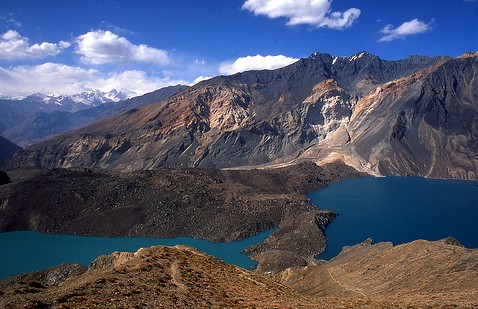Scientists in Kyrgyzstan Predicting More Earthquakes
Speaking to members of Parliament, the head of the Cabinet of Ministers of Kyrgyzstan, Akylbek Zhaparov, said that 13,000 seismic shocks have been recorded in Kyrgyzstan just this year. According to Zhaparov, specialists are currently studying dangerous zones. "Only on April 2, 828 earthquakes were registered worldwide within 24 hours, and 6,892 in seven days... Over the past 150 years, more than a dozen earthquakes with a magnitude above seven have occurred on the territory of the republic," Zhaparov said. The prime minister noted that scientists from the Kyrgyz National Academy of Sciences are now studying dangerous zones where destruction can be expected. In addition, he instructed members of parliament to strengthen regulatory control over the seismic resistance of buildings, as well as the quality of facilities under construction. Following a strong earthquake on the border of Kyrgyzstan and China in late February this year (seven points in its epicenter), the authorities of Kyrgyzstan created an interdepartmental commission to check buildings that are at risk of being destroyed, but that commission didn't record serious damage at that time. Additionally, special services raided construction sites. Despite corruption scandals in the industry - several directors of large construction companies are under investigation - the special services did not identify any major violations. Meanwhile, according to the National Academy of Sciences of Kyrgyzstan, in 2024 the republic is indeed among the top five countries in terms of earthquakes registered. In 2023, the Institute of Seismology of Kyrgyzstan recorded twice as many tremors as a year earlier. At the same time, most of these tremors were not felt by people, they were recorded only by special devices. However, the public shouldn't worry too much about it, Kanatbek Abdrakhmatov, the country's chief seismologist said, adding that any seismic activity has its own periodicity. "We are now living in the fourth period of seismic activity, which began in 2008 and will end according to our forecasts in 2026... The strength of earthquakes in this active period was not supposed to exceed 5-6 points. Until today, these predictions have been realized. The only event that exceeded our expectations was the Chinese earthquake on February 23, 2024. Well, it happens! Don't be afraid, people!" Abdrakhmatov, head of the laboratory at the Institute of Seismology of Kyrgyzstan, wrote on his Facebook page. As a mountainous country, Kyrgyzstan is in an earthquake-prone zone, and in recent months the country's residents have felt more tremors than usual. The Institute of Seismology believes there is nothing to fear, because the tremors are not strong, but the panic that these tremors can provoke is much more dangerous. That's why, almost every time there is another tremor in Kyrgyzstan, the head of the Institute of Seismology writes a note on his social media, attempting to reassure the population. "Probably many people felt the small earthquake that occurred a few minutes ago. The epicenter was in the mountains, under the Kyrgyz ridge, about 25-30 kilometers south of Bishkek. In Bishkek it was 2-3 points. Nothing...




